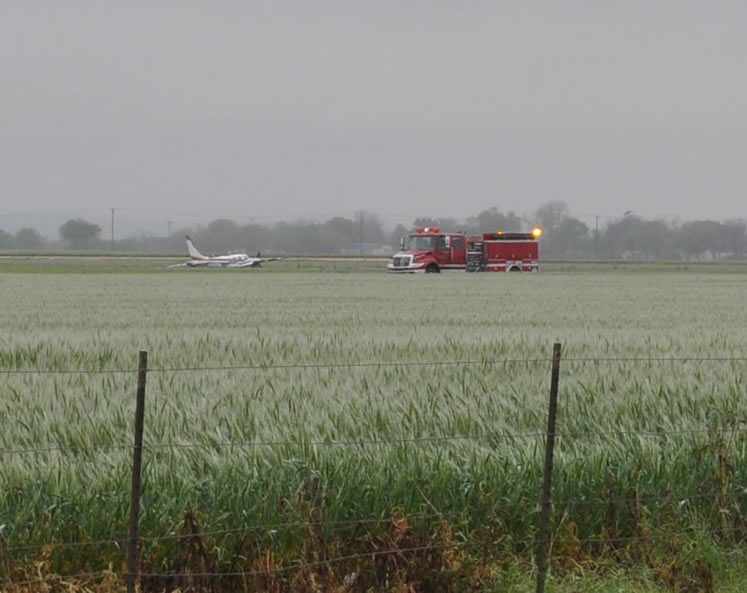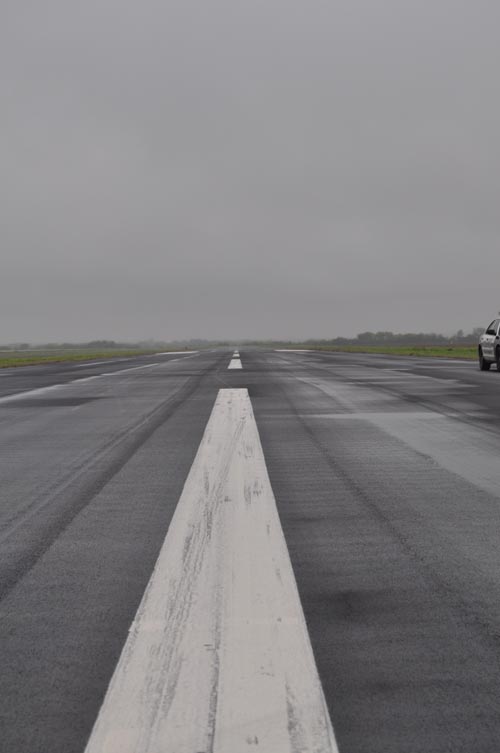A Flight to Remember
March 24, 2013
As my friends and family know I love all things aviation. I have from my single-digit years. My first pastel drawing was of Charles Lindberg's Spirit of St. Louis at ten years old. I enjoyed building airplane models, from P-51 Mustangs to Corsairs to the B-17 Flying Fortress. I remember going to the first Wings over Houston Air Shows in the early/mid-eighties and being in awe of those men and women and what they could do with their machines.
Last year, I was invited by a pilot friend to fly with he and a friend to an area west of San Antonio and look at some property he was interested in. Having flown with him before, I jumped at the opportunity and drove to a local airport in Houston and met him there. The weather was not great, gray and overcast. We decided to wait for the weather to improve some, which it did slightly. We were planning on an instrument departure, meaning we could take off in poor visibility, then would cruise at ten thousand feet to our destination airport where we expected ceiling visibility to improve by the time we were to arrive.
The departure was wonderful. Here I was, a student pilot in the right seat of a high-performance, pressurized twin-engine airplane that just blows the doors off of any trainer that I had ever flown. We ascended through the gray overcast. Flying in solid clouds creates a unique sensation- it is as if the cockpit becomes a smaller place, confined, darkened by the water molecules' ability to filter light. The feeling didn't last long, as the clouds gradually brightened until we broke out into a bright blue indescribable sky. I have always wanted to know what it would look like to be "on top" of the clouds and I was beside myself with excitement.
After a thirty-minute cruise at ten thousand feet, we began the descent. I slowly watched as the surface of that quilted cloud layer came closer. Obviously the weather conditions at our destination had not improved. The pilot checked the weather at our destination airport, and the ceiling and visibility were not great, right at “minimums”, or minimal levels for an instrument approach. I was assured that if the approach didn't look good, we would abort and go elsewhere, or back to Houston for that matter. We settled slowly into the clouds, though this time it was very different. Suddenly those clouds became ominous and threatening. There was no turbulence, in fact the air was very stable and still. It was just as if that mist contained something very dark―yes, this was my first descent into solid overcast (IMC, or instrument meteorological conditions) but somehow I knew things weren't right. The light from the bright blue sky above was shut out and a dark dismal gray enveloped us as we entered the dragon's breath.
Flaps fifteen degrees, landing gear down. I was following the approach with the charts I held in my lap, as well as the GPS display on the instrument panel. After what seemed like a very long time, we broke out of the dark clouds at minimal altitude, about five hundred feet above the ground. I suddenly saw the runway threshold slide past the right wing. We were not aligned with the runway to land! The pilot could not get into position at that point, and despite my request to “go missed” (execute an abort and go somewhere else) he decided to make what is called a circle-to-land approach. Basically it's what it sounds like-- a long, left banking turn to get back around to the approach end of the runway.
We were still just barely out of the clouds with poor visibility, doing what pilots call “scud running,” or trying to maintain visual contact with the ground while in low clouds. I advised the pilot to go "missed" again, but he felt he could make it. I asked twice more to abort. He was determined.
Those of us who have turned our faces skyward as children have a love for those big puffy white things in the sky. We watch in awe as they lazily drift along with the wind and we yearn to touch them, wondering with our young minds what they would feel like. I have learned that clouds also have a dark side. That day, the cloud layer indeed contained something dark, something so powerful that it seduced the mind of an experienced instrument-rated pilot. The devil's playground. I can only describe that circle-to-land in the clouds as if we were flying in a small dark room.
I pointed out the approach end of the runway as it came into view, but we were too close to get safely established on a properly-aligned final approach path. The dark force that had seduced the pilot indeed had a firm hold; it created the desire, the absolute need to land the airplane. We had plenty of fuel, there was absolutely no reason why we had to land. The pilot cranked that big, fast airplane into a steep left turn in a desperate attempt to line up with the runway. Suddenly, it was as if I was in an elevator when the cables broke. That magnificent airplane, in the abrupt steep banking turn, stalled at one hundred and forty knots at less than five hundred feet above the ground. The disruption in air flow over the wings and control surfaces caused a complete loss of lift-- an accelerated aerodynamic stall. We were no longer flying.
We plummeted at that crazy bank angle in the fast, heavy airplane toward the ground. Being just a student pilot at the time, I instinctively reached for the control yoke, only to find it turned fully right to the stops, as the pilot tried to counter our roll to the left. I saw the runway and estimated our point of impact and death to be somewhere near the first quarter of its length, on the right side next to a freshly plowed field. I had learned enough about aerodynamics and flight physics over the years to understand what was happening-- we were in an approach-turn stall, one of the leading causes of aviation fatalities every year. In most of the cases, the airplane stalls, rolls inverted and impacts the surface nose-down. What happened over the next several seconds I can only describe as a collage of thoughts, memories, and images. I thought of my two boys and how sad they would be to learn of their dad's death. My wife had taken them to my youngest's “Opening Day” of baseball season, and I'm sure they were having a great time, with moonwalks, candy and sodas. I had jumped at the chance to fly, yet now desperately wished to be with them.
The pilot shoved both throttle levers fully forward, and I heard both 300-horsepower engines screaming, their propeller blades clawing at the humid air. We were still falling, and with a sickening, horrible realization I knew I was truly helpless- there was nothing I could do to avoid death. I was actually looking up at the runway, which was quickly filling the windscreen. In my desperation, I cried out to my last hope-- yet as with a father's calm hand on a son's shoulder I realized He had been with us the whole time. “Jesus!” escaped my lips.
The airplane stopped rolling left as the prop wash from those two engines created improved airflow over the wings and rudder and we began rolling back to the right. We were still descending at an uncontrollable rate, yet we had rolled back to an almost wings-level attitude. There was hope.
The impact was nothing like I've ever experienced. We met Mother Earth at 140 knots, 161.1 miles-per-hour, slightly left-wing-low. We slid along as the left main landing gear folded up into the fuselage, rupturing the left wing fuel tank. The roller-coaster-ride went on for what seemed like a very long time, and I braced, expecting the left wing to bite into the ground and toss us into a cartwheel as we slid sideways. I imagined the cartwheel and following desintegration of the airplane would be swift, hopefully painless. The deceleration g-forces were incredible and with one last dramatic lurch sideways, the airplane spun around and came to rest facing the direction from which we had come.
I expected to see smoke and flames. There were none. Master switch off. Three of us climbed out of that broken bird, physically unhurt.
I do not have any ill feelings toward the pilot of that aircraft's last flight. He is a very special, family-loving man who played a huge role in my decision to pursue formal flight training. I understand that a series of events usually contribute to the outcome of an ill-fated flight, and in this case it was something as simple as, "I can do it, I can get us there-- it would be inconvenient to have to go out of our way for better weather..."
Bad weather, bad decisions.
I believe that God allows us, as his children to experience things according to His purpose. Amazing things happen every day and there are those who believe that God has nothing to do with those events, maybe even believe that He doesn't exist at all. I pray for those, that they will see through His eyes and know that through Him, all things are possible.
-S.
Jesus looked at them and said, “With man it is impossible, but not with God. For all things are possible with God.” -Mark 10:27

This was taken from the runway centerline, a rare opportunity:

